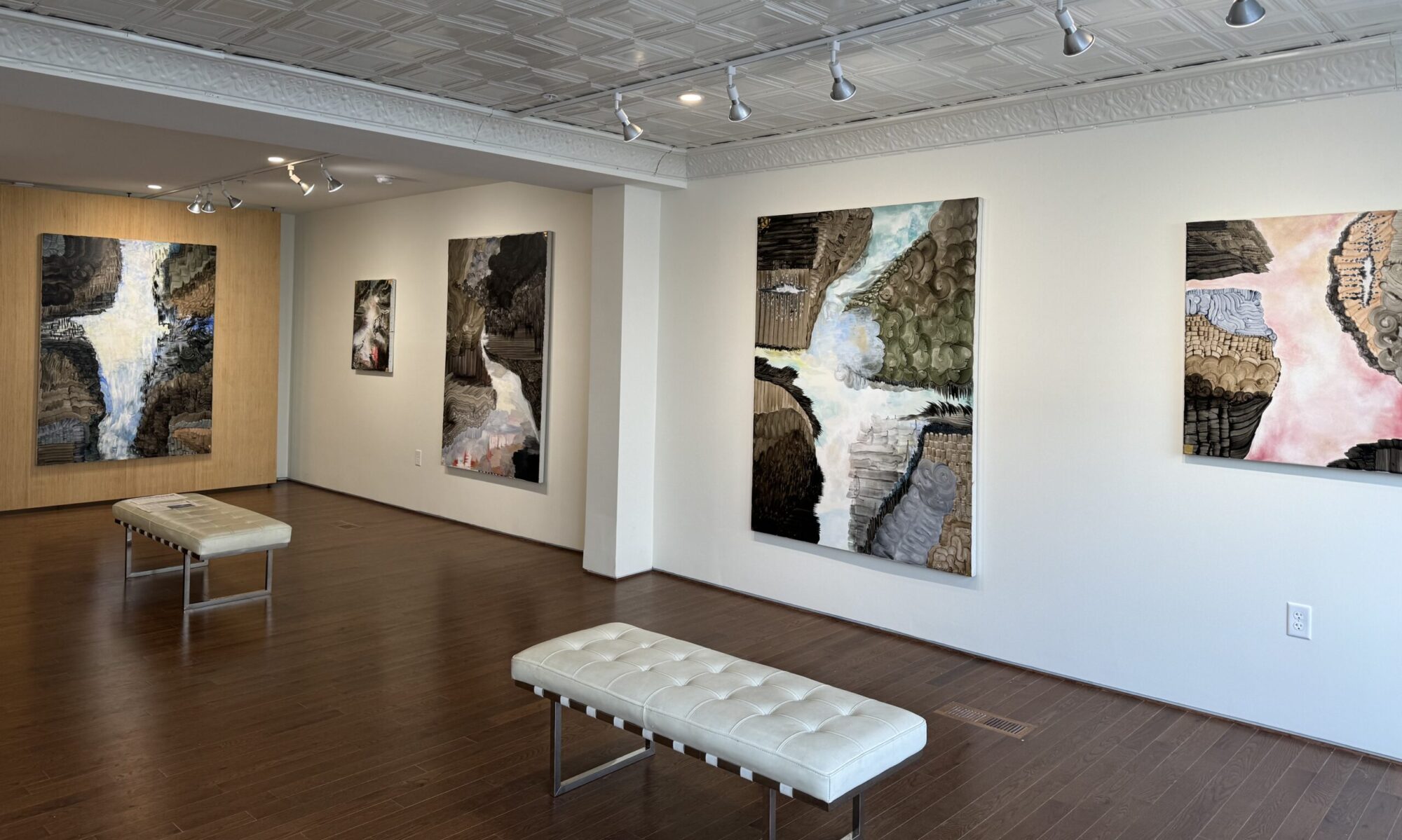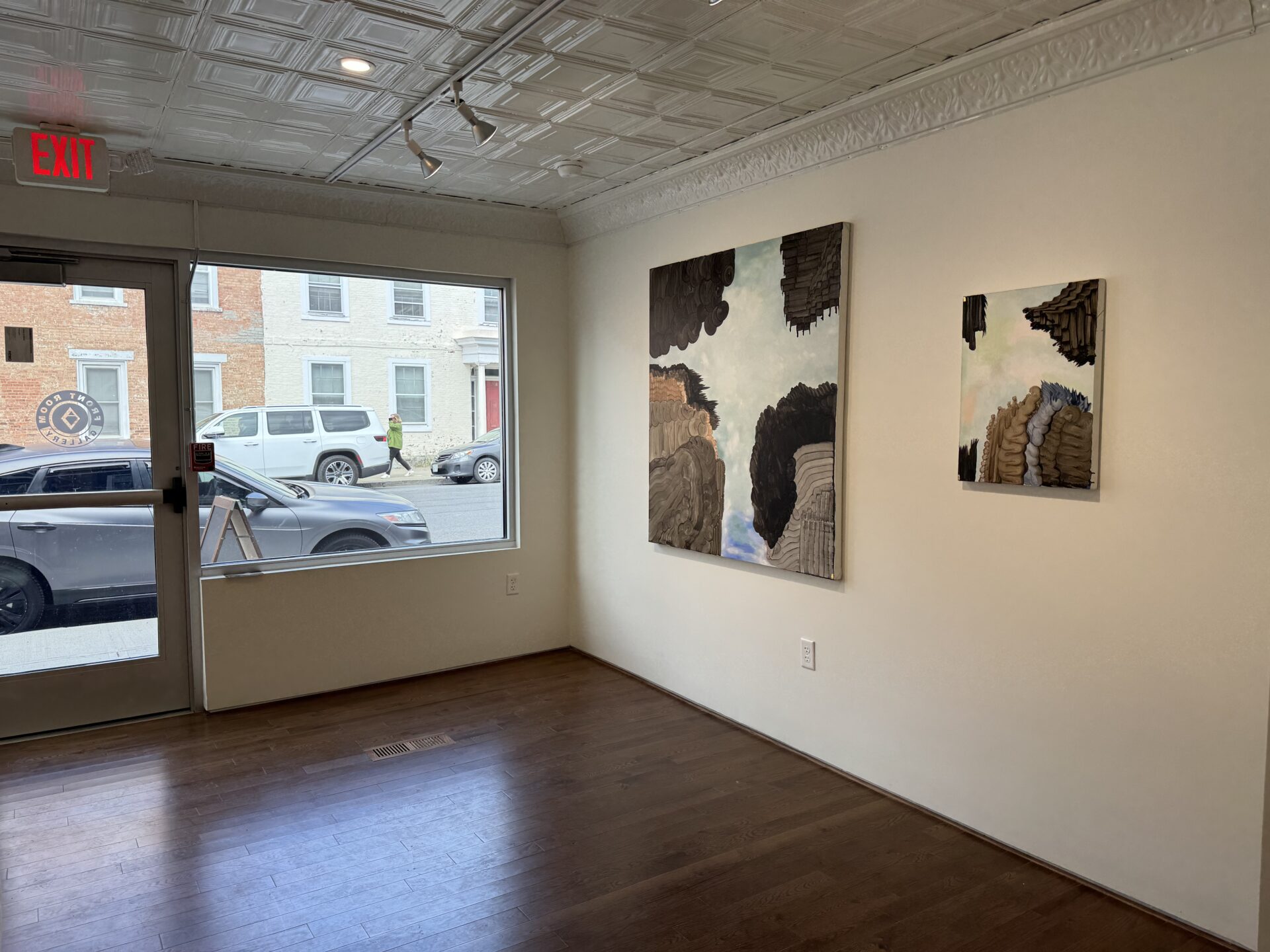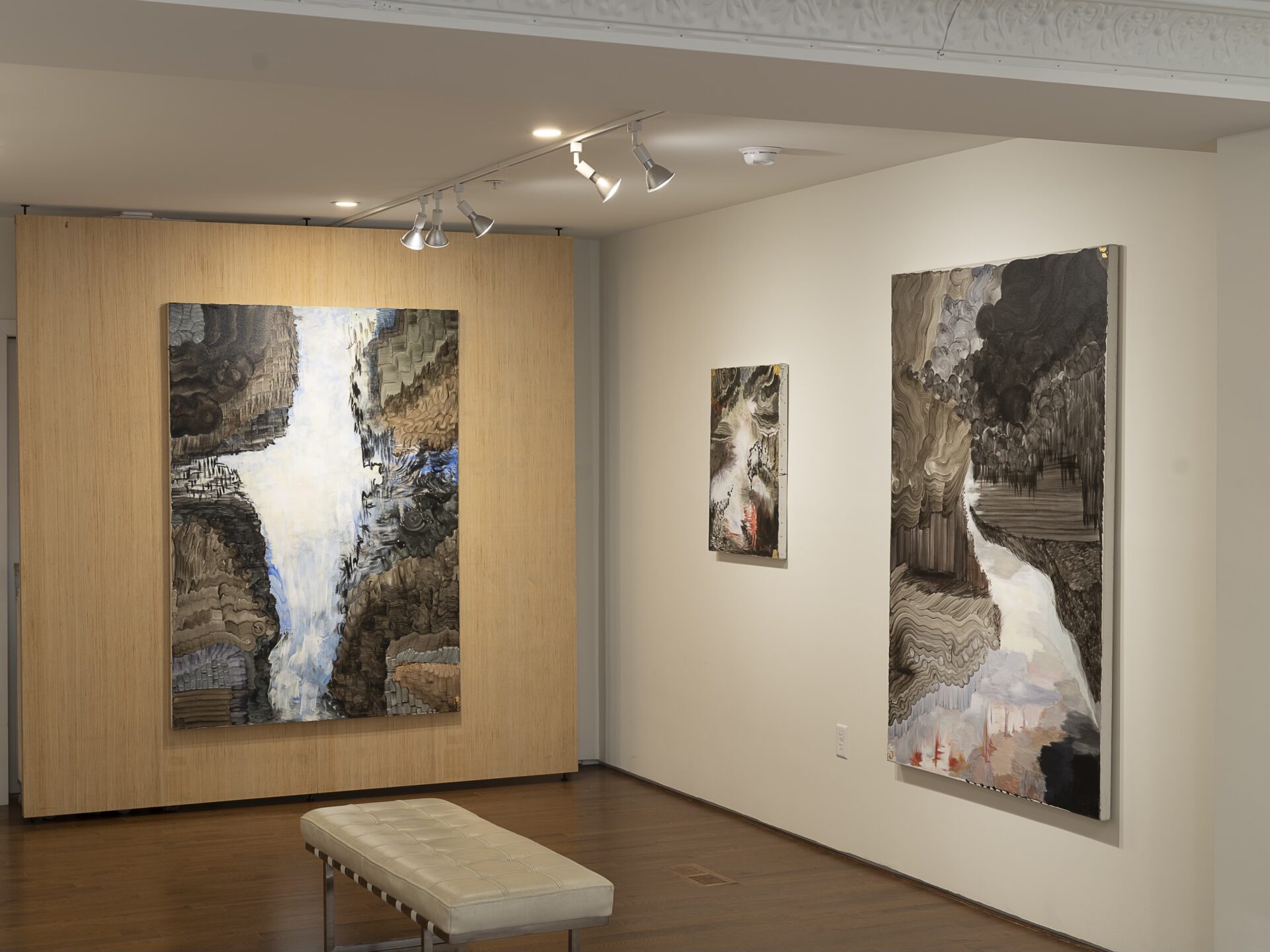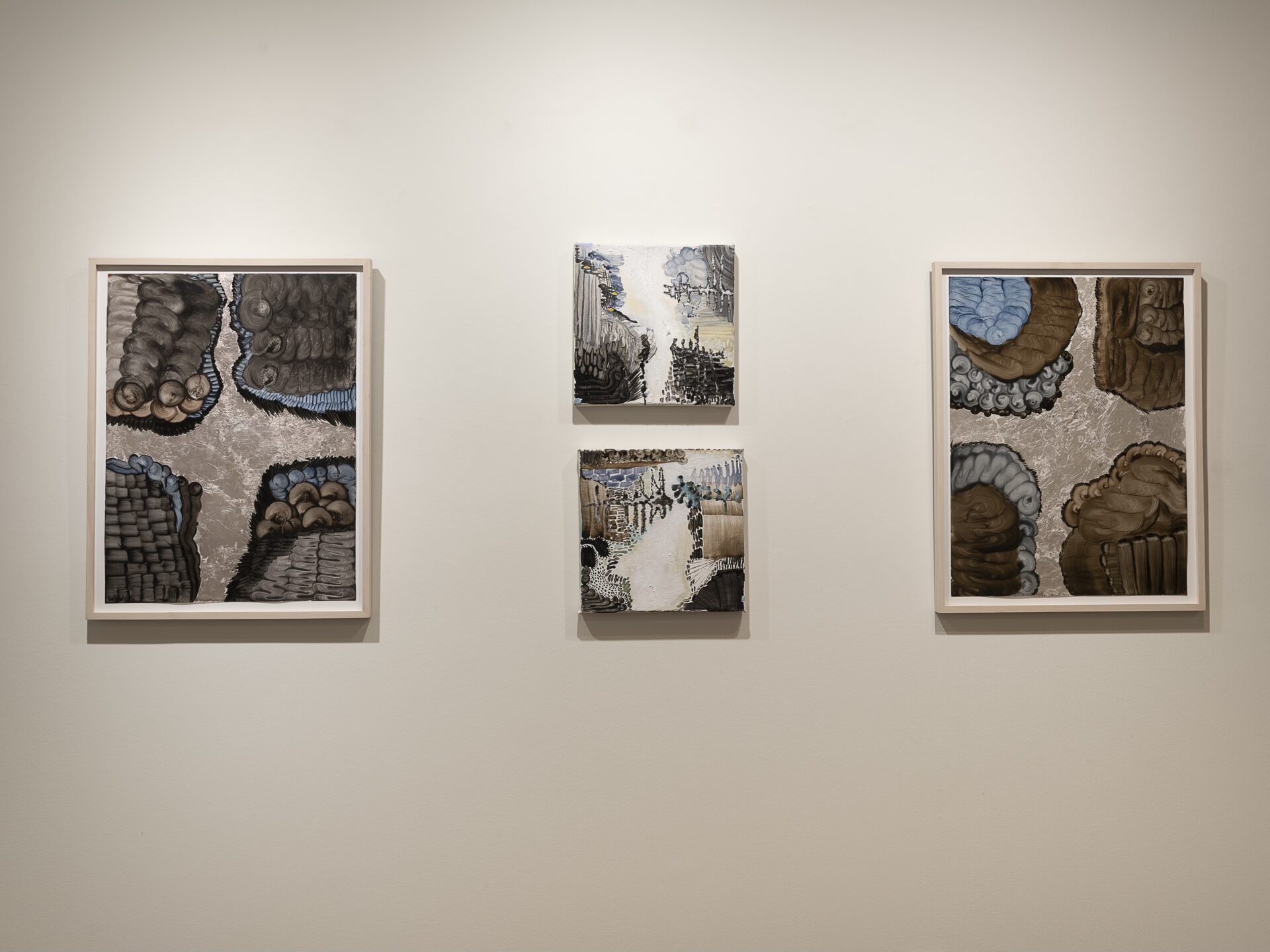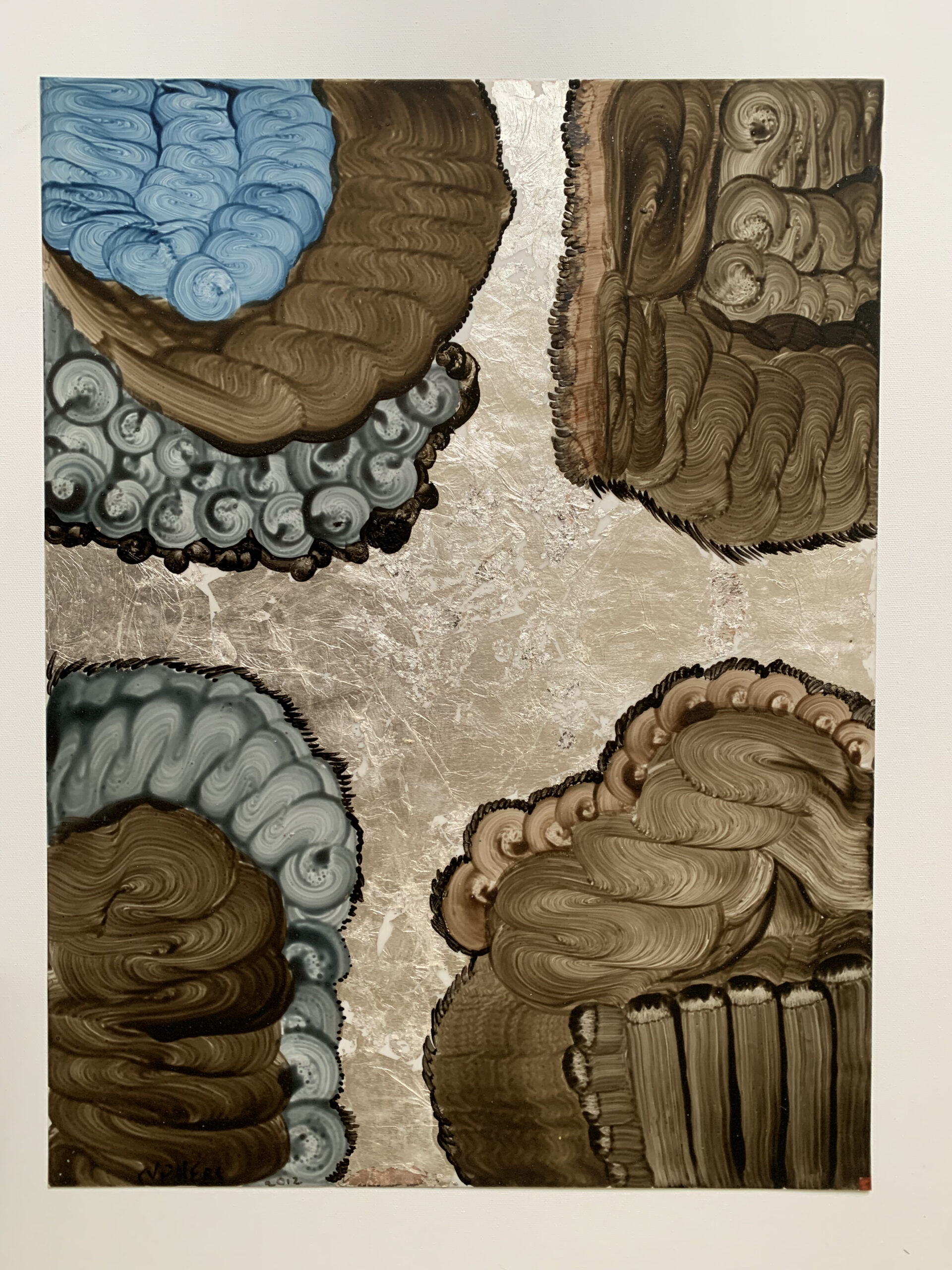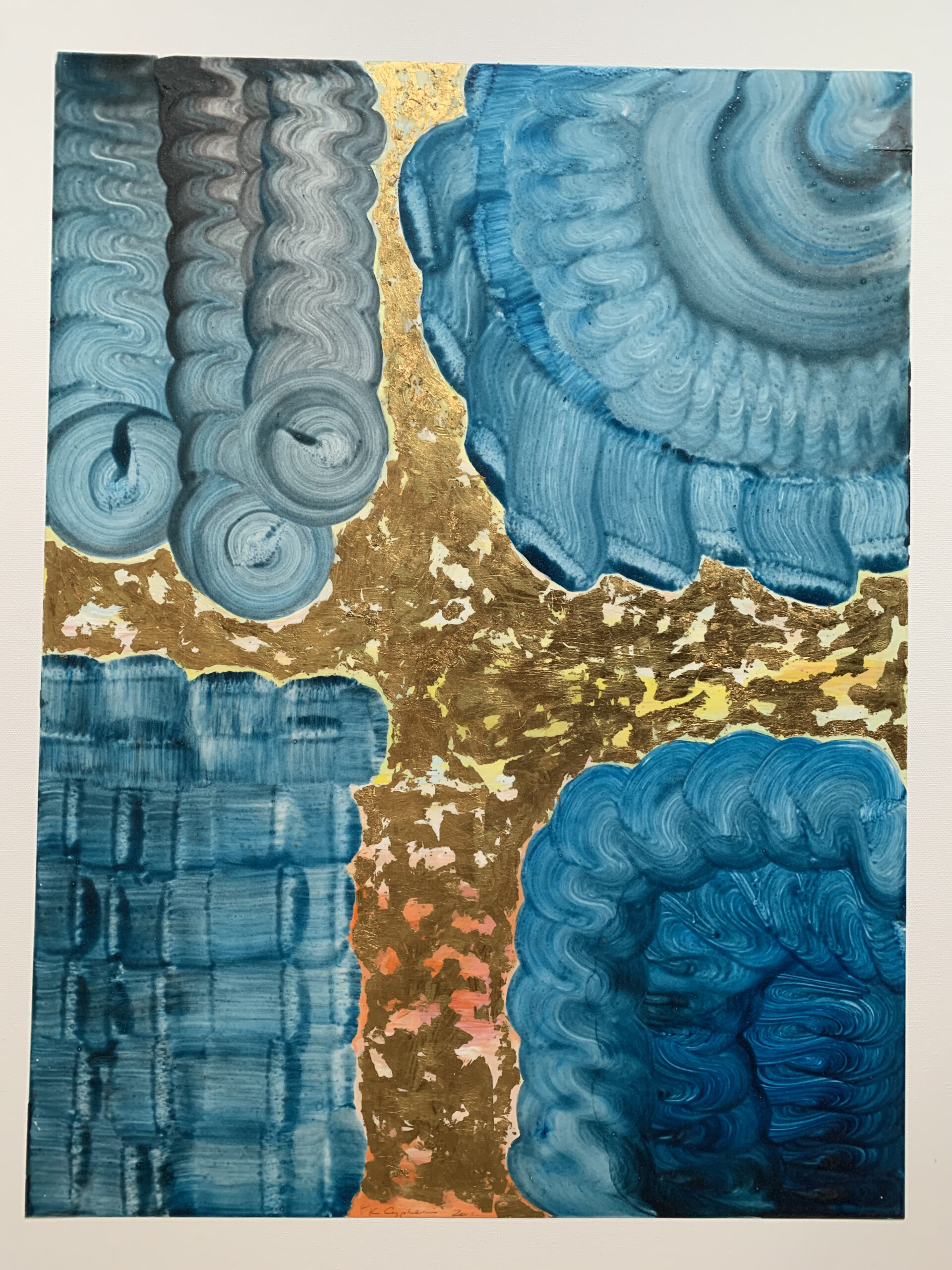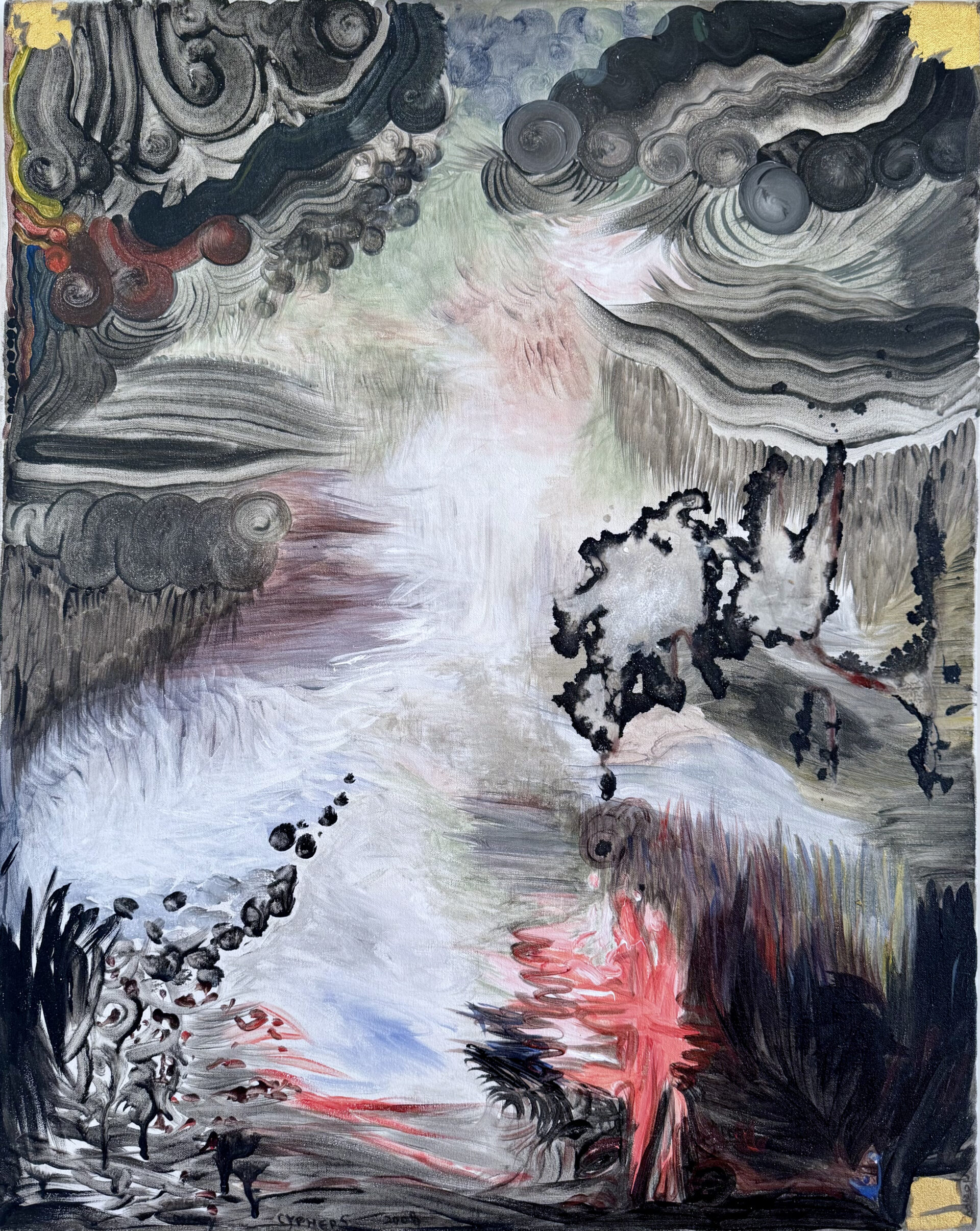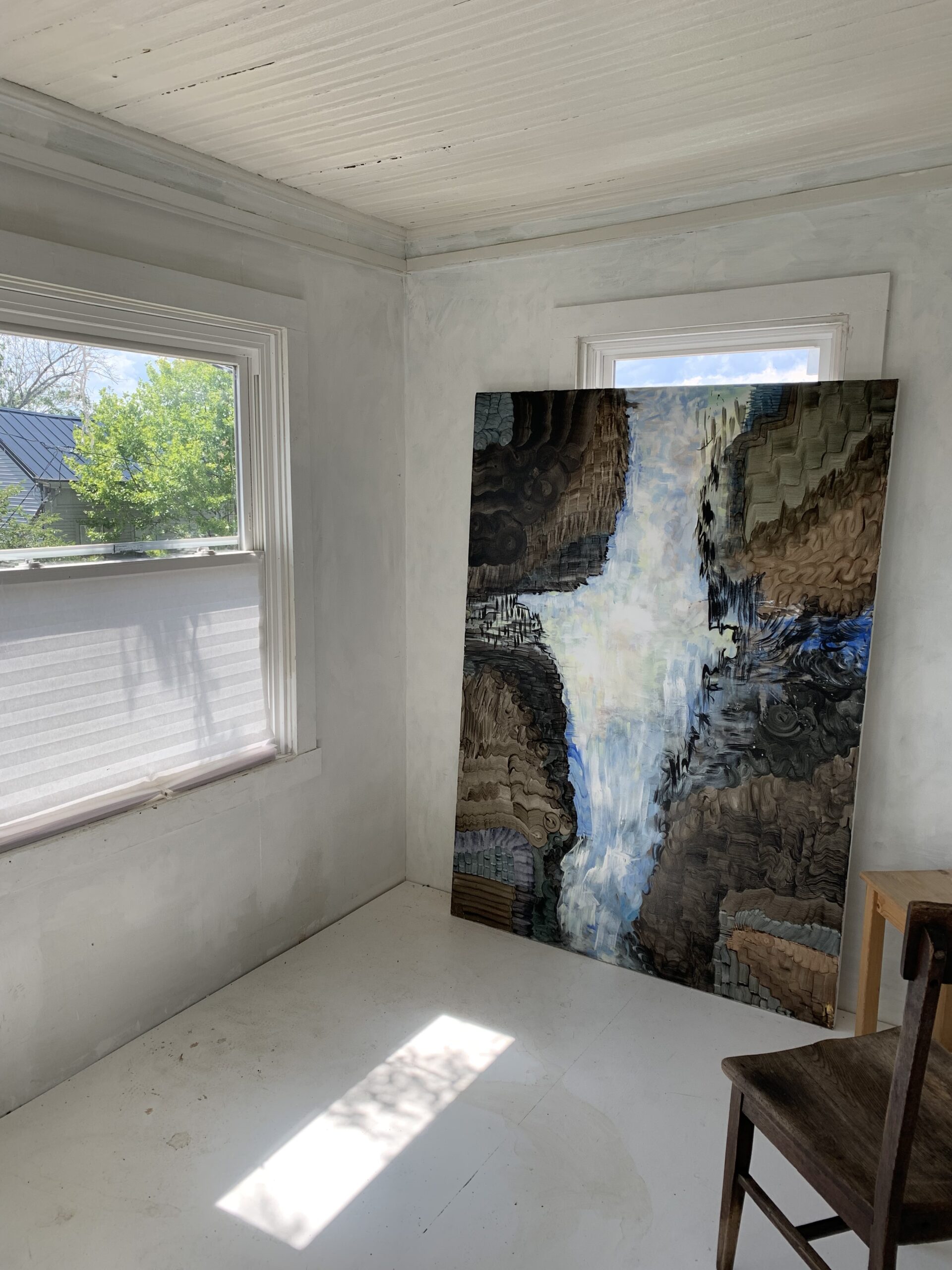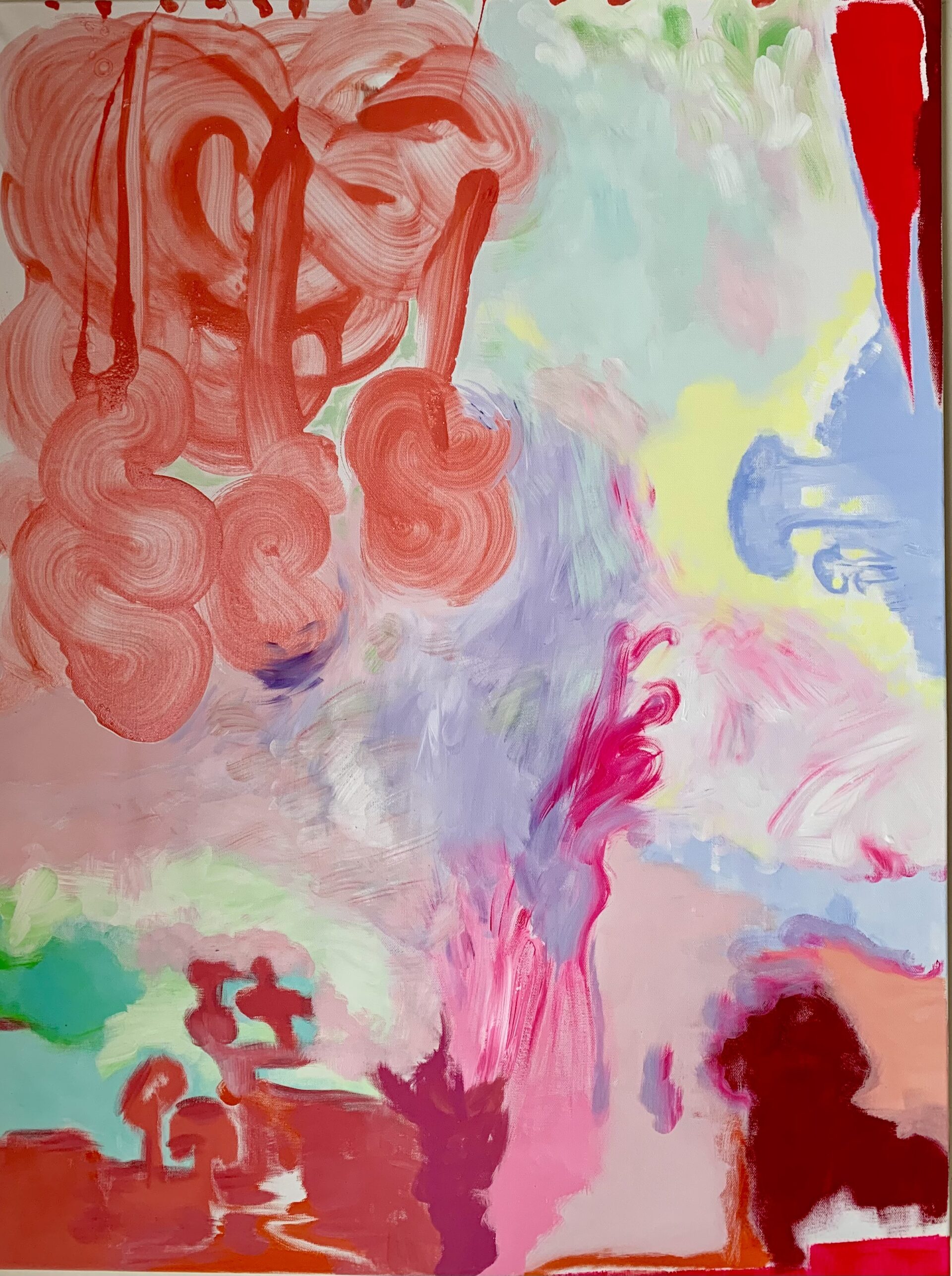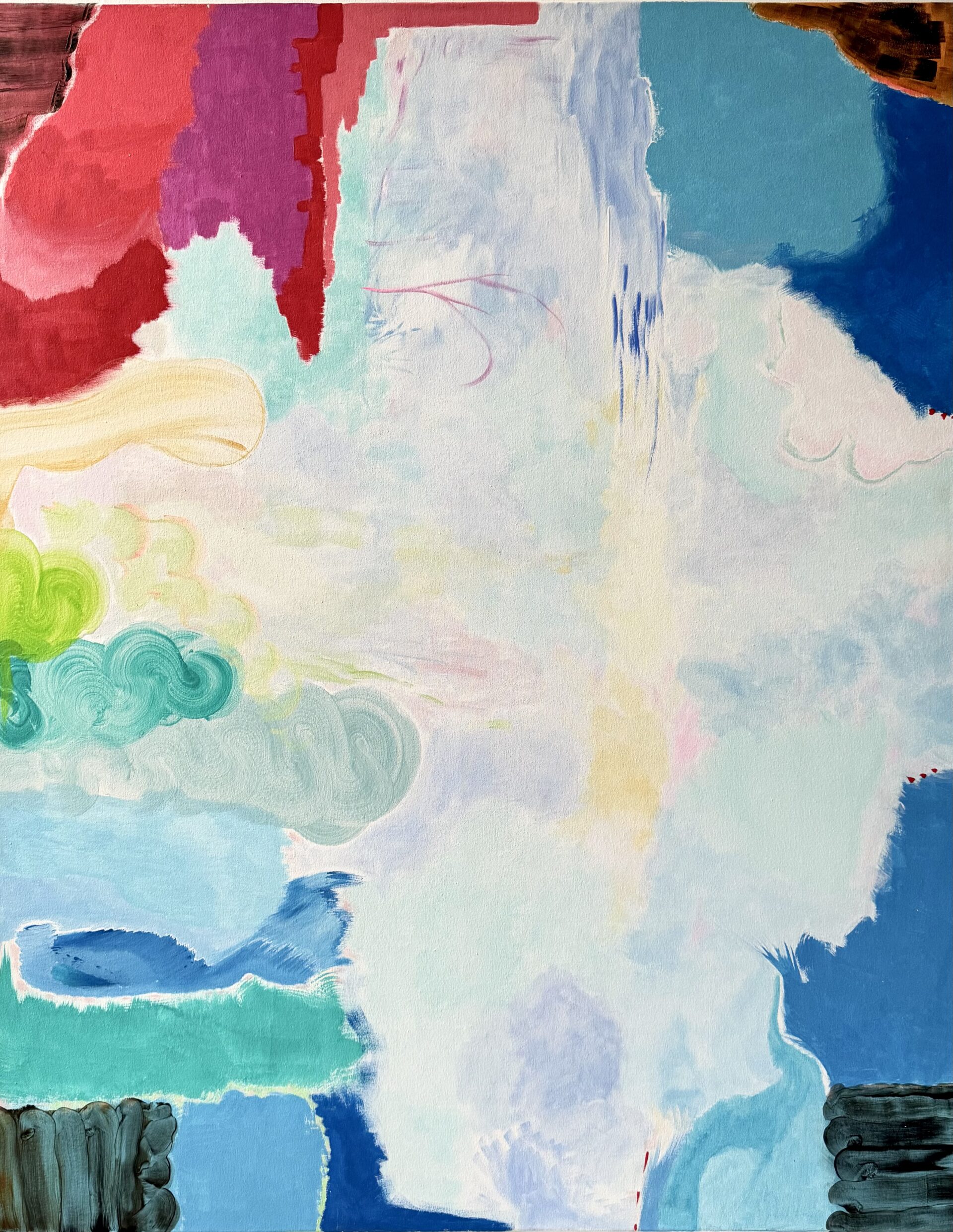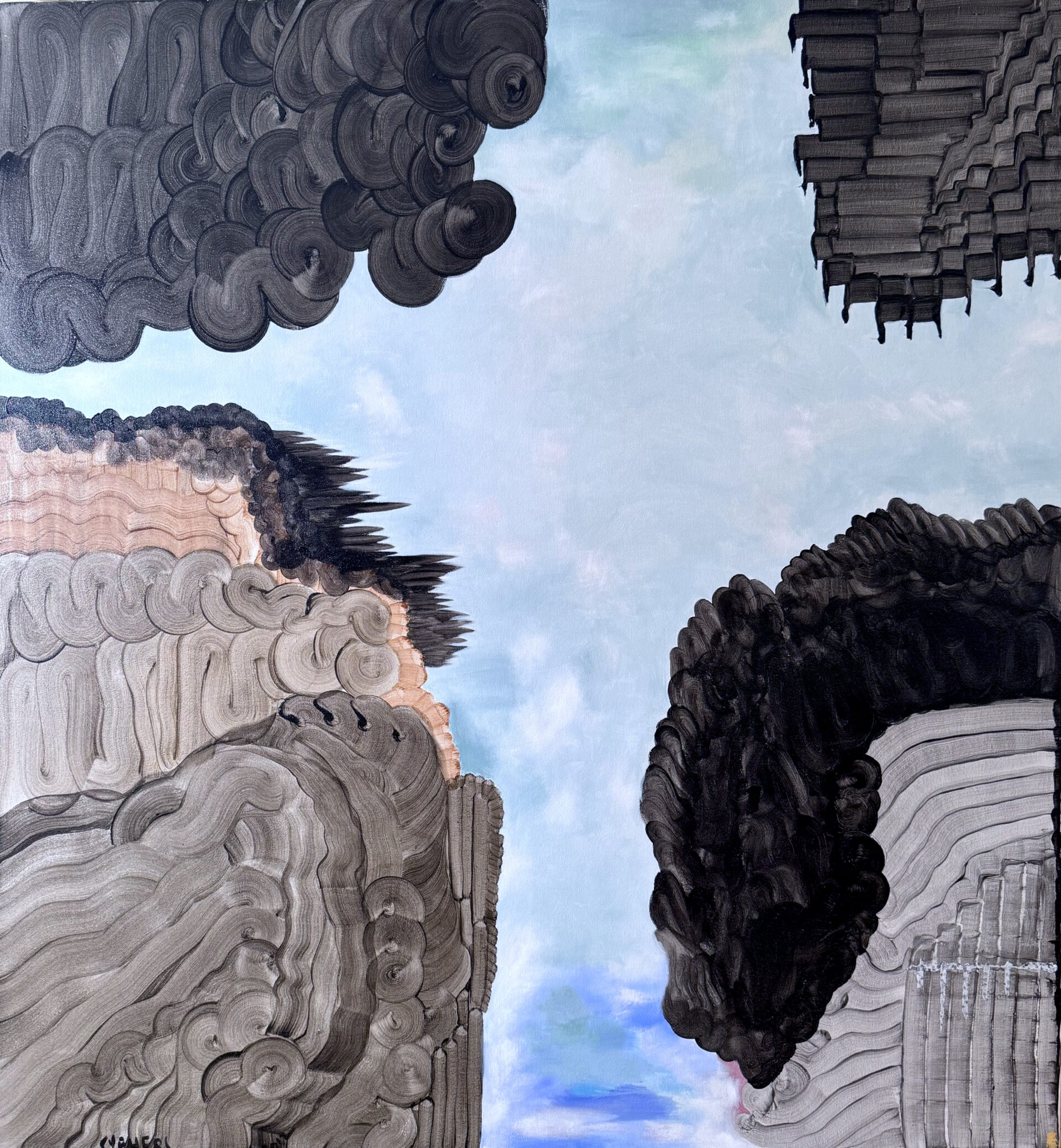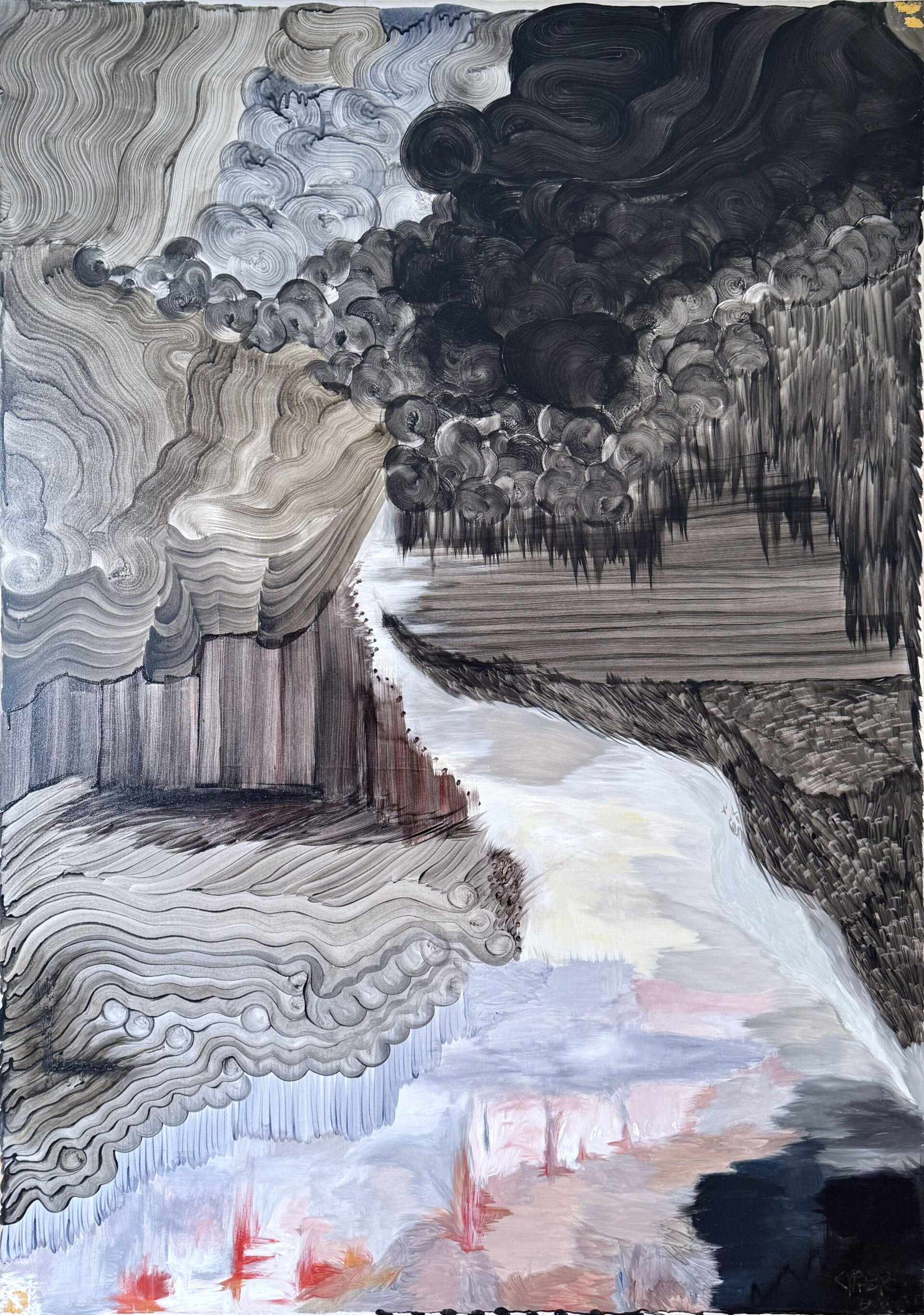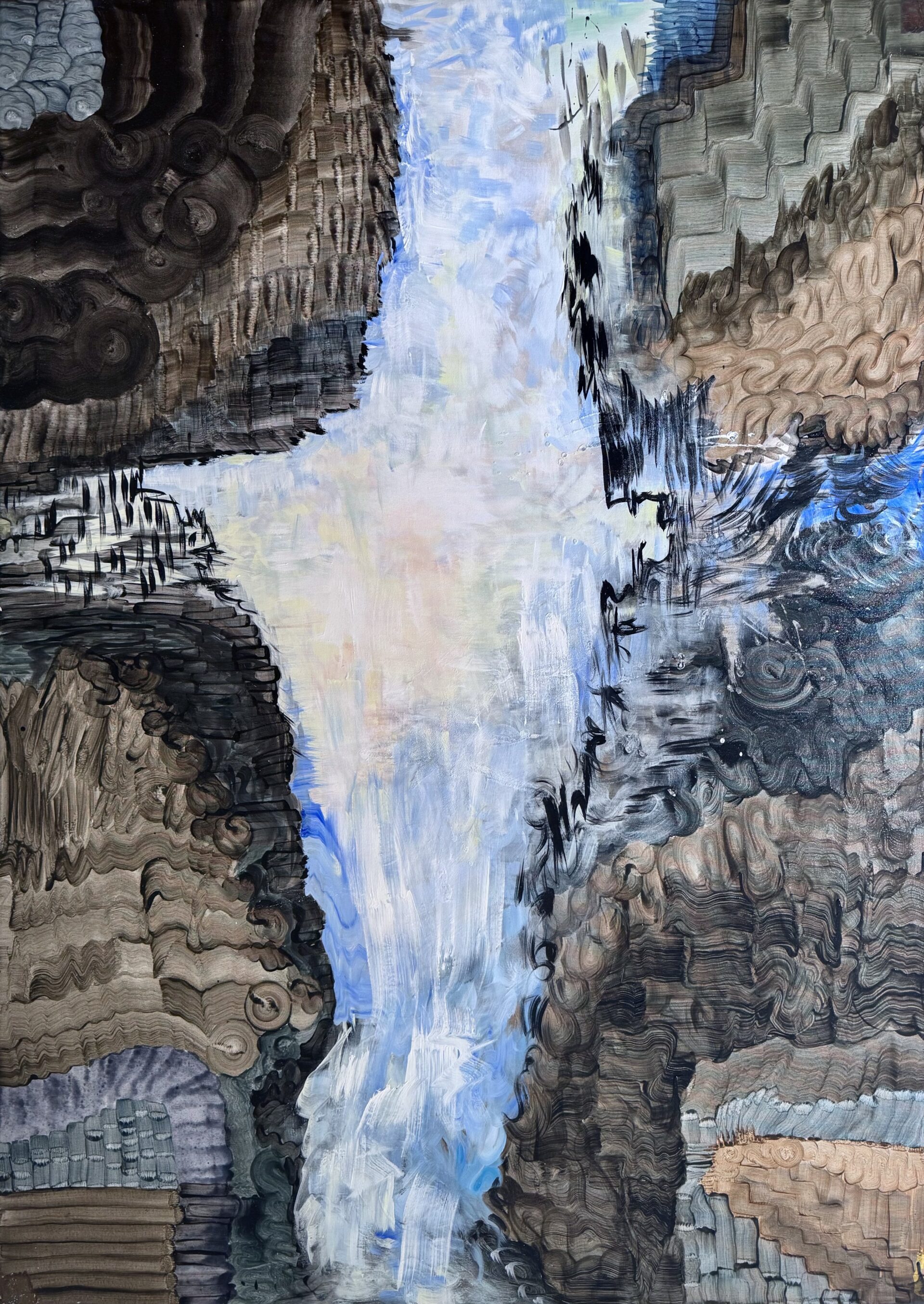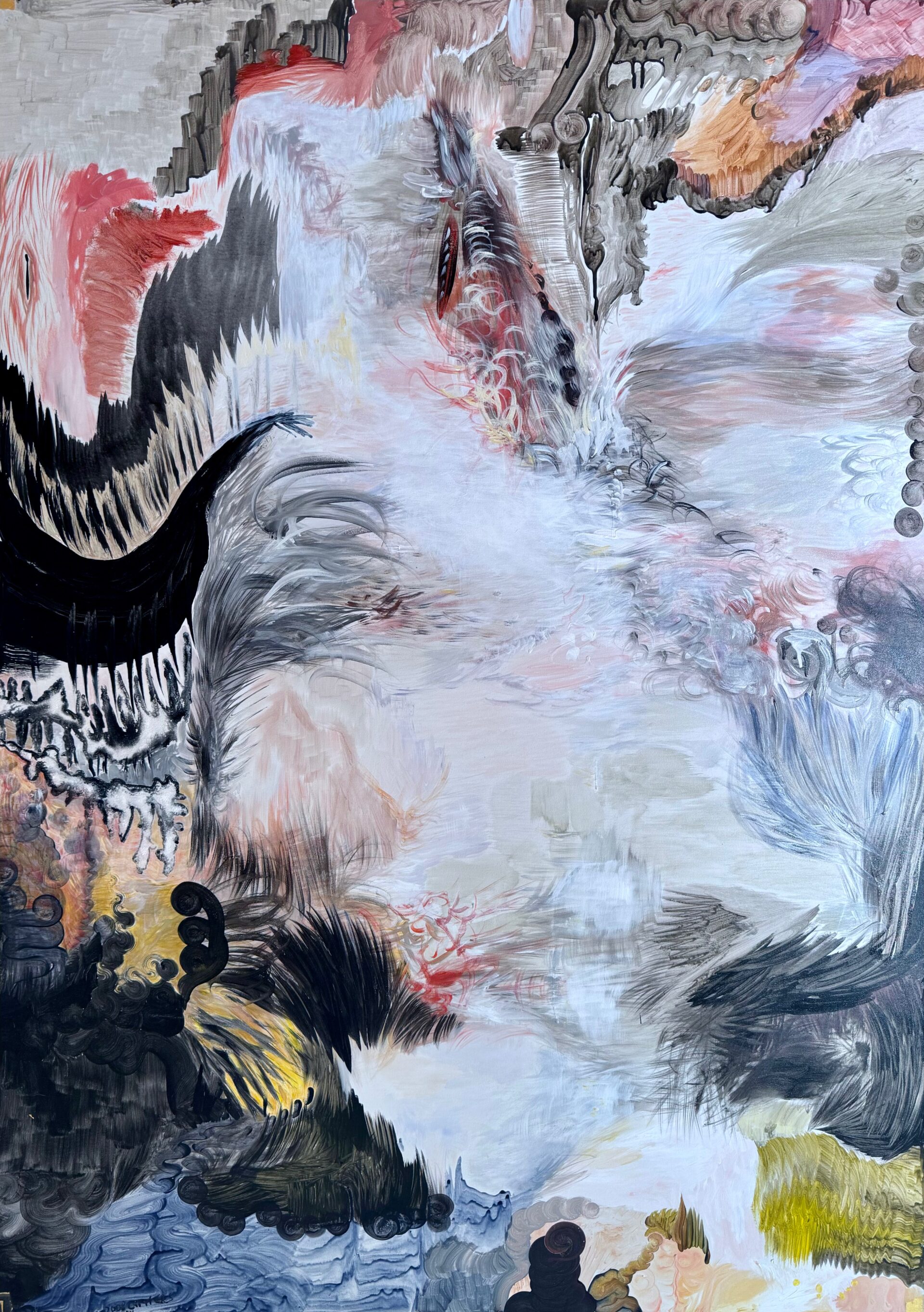From the fossils of the Calvert Cliffs of Maryland, to the landscapes of far-off places like China and India, and the flora and fauna still visible in New York City—painting is a way for me to create a dialogue between each of these elements, across physical distance, and through time. These paintings draw from historical references such as Pliny’s Natural History, Chinese landscape paintings, and Native American traditions, seen echoed in the brushwork and the use of natural, textured materials like sand and gold.
– Peggy Cyphers
“Peggy Cyphers was teaching at Pratt at the time and she was my teacher. She’s an incredible artist. […] I was in the studio every day and Peggy Cyphers saw that I was a hard worker and she told me about Yale School of Art summer program and that she encouraged that I apply. And so, I did and I got in, and I was the first one to get in that program from Pratt in many years, because I think it was probably like a 10 to 12 year period before anyone had gotten into that program.”
– Mickalene Thomas, interview with PRINT Magazine
“Now she’s just painting, in an effortless style that corrupts and complicates the staining technique originated by Color Field painters like Helen Frankenthaler with various ideas in the air: notational, pattern-prone motifs, landscape references and allusions to textiles and fabric. The plants are still here, but now they are usually soft blooms and plumes of color that also suggest, with a little help from the titles, wet pavement, blurry stop lights or even the Brooklyn Bridge.”
– Roberta Smith, New York Times
“Like Paul Klee, Cyphers employs simple elements to form elegant compositions; like Joan Mitchell, she tends to work her canvases in a dense, layered manner guided by an instinct for balancing form and color. But her understated, vaguely representational visual lexicon is completely of her own invention.”
– Sarah Valdez, Art in America
“Yet despite such appearances, the light of her paintings is almost as varied, and quite a bit fuller. In fact, what makes her paintings convincing is not so much their imagery, which is familiar enough from the work of artists like Terry Winters, but their expansive luminosity and their sure, subtle way with composition. Ms. Cyphers’s apparently loose and free-floating forms never add up to compositional negligence or disorder. Instead, there is a subtle underlying classicism at work, keeping each thing placed and centered.”
– Barry Schwabsky, New York Times
